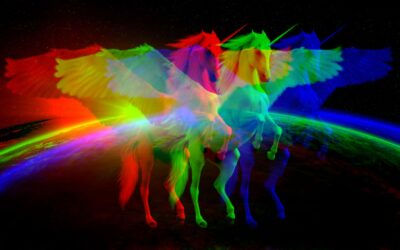George Lucas: UX, Anthropology, & Divorce
04
May 2022
-
CAtegories
-
discover more
Below is an article that originally appeared in The Argus in 2015. It’s primarily an interview with the creator of Star Wars, George Lucas. This was post-sale of the franchise to Disney (for a whopping $4 billion.)
There are several key takeaways from this article that relate to design and digital transformation.
Here Are Some of Our Thoughts:
Before Lucas made Star Wars , he was dared to make a comedy by his classmate and friend, Francis Ford Coppola. He made American Graffiti. Although only released in 1973, the movie is a look back at the early 60’s. While Lucas doesn’t say this in the interview, Star Wars would have been different had he not made American Graffiti. Sometimes you can take inspiration from ideas or designs that may not seem connected.
Lucas says that his favorite subjects in college were psychology, anthropology and sociology. As a master storyteller, I bet these subjects help him tell stories that connect with audiences. These skills are important to building a digital transformation process that resonates with people. There are countless movie flops that had lots of amazing special effects and technology, but if the story doesn’t connect, it won’t be a hit. (Shameless plug: YOU CAN READ OUR WHITEPAPERS ON HOW TO USE ANTHROPOLOGY IN YOUR DIGITAL TRANSFORMATION HERE)
Lucas refers to the Disney purchase of the franchise as “a divorce.” He says something quite significant in the article. The interviewer explains this, saying Lucas always knew that at some point he’d have to part with Star Wars in order for the franchise to go on living. This is profound. Lucas is acknowledging that Star Wars is bigger than himself. He compares it to a child who has now become an adult. It has grown up into more than a movie. (It even has its own holiday. Hence, this newsletter.) It’s bigger than the creator. This is a great reminder that at some point your ideas and designs will outgrow you. It would have been easy for Lucas to retain control and assert the story he wanted to tell, but sometimes you have to let go of your ego for the sake of the story and let it become what it is supposed to become. That is an important lesson.
HERE IS THE ARTICLE IN FULL:
Life After the Force
Source: Argus, The; Cape Town
At the ranch, yes. Yes. Feel it flowing within you. The gate, the road, the hills, the trees, the vineyard. You, him, the house. Luminous beings are we. This was all built in the 1980s with piles of that initial Star Wars money, yet the main house was made to look several decades older, grander, Victorian – authentically ersatz, basking in the Marin County sun.
In a short hallway off the foyer are two discrete, glass-encased shelves containing what you thought you’d see, when and if you ever got past the guards at Skywalker Ranch: Darth Vader’s lightsabre hilt, Indiana Jones’s Holy Grail, that kind of stuff. Visitors are sometimes disappointed the place isn’t packed with it.
Snooping around anyhow (admiring all the other original art, including Norman Rockwell’s 1920 painting Shadow Artist), which is when the 71-year-old film-maker George Lucas silently pads up from behind in his white tennis shoes and faded blue jeans and that casually impressive pompadour of silver Hair.
He is to receive a Kennedy Center Honour tomorrow for his blockbuster work in movies and film technology, but he’s quick to point out that he’s the only recipient this year who isn’t technically a performer. “I perform in the shadows,” Lucas says, and these days he’s more familiar with the darkness of outer space. “Once you get out of the hot part of the burner, everybody forgets about you -which is okay.”
It’s strange to be the father of Star Wars at this particular moment. The Honours are being held a mere 12 days before the intensely anticipated release of Star Wars: The Force Awakens, the saga’s seventh episode – directed, amped up and recharged by JJ Abrams. Look close at the credits on the movie poster and notice that Lucas’s name is nowhere on it, unless you count the word Lucasfilm.
Since selling Lucasfilm Ltd to Disney three years ago in a jaw-dropping $4 billion deal (which included handing over Star Wars, Indiana Jones, all of it), Lucas has had no connection to the new film, despite initial reports that he would play a consulting role.
He says that Disney “decided they didn’t like” the stories he’d outlined for the sequels. It became clear to him that his baby was going its own way, and at light speed. Disney is now building two huge Star Wars theme parks and has additional movie projects – besides Episodes VIII and IX – in the works.
“I call it like a divorce,” Lucas says candidly. He always knew that at some point he’d have to part with Star Wars in order for the franchise to go on living.
“There is no such thing as working over someone’s shoulder,” he says. “You’re either the dictator or you’re not. And to do that would never work, so I said ‘I’m going to get divorced.’ I knew that I couldn’t be involved. All I’d do is make them miserable. I’d make myself miserable. It would probably ruin a vision – JJ has a vision, and it’s his vision.”
As recently as a couple weeks ago, with fans going ape over titbits and new trailers for The Force Awakens, Lucas had still not seen the film. Not a Frame.
He expected that he would soon see it here at the ranch (“I’ve got the best theater in the world,” he notes), perhaps even with Abrams and Lucasfilm Ltd President Kathleen Kennedy (a long-time Lucas collaborator) in the room, watching him watch it. What then?
“Now I’m faced with this awkward reality, which is fine,” Lucas says. Extending the metaphor, he says it’s like when a grown child gets married. “I gotta go to the wedding. My ex will be there, my new wife will be there, but I’m going to have to take a very deep breath and be a good person and sit through it and just enjoy the moment, because it is what it is and it’s a conscious decision that I made.”
As a kid in Modesto, California, George Walton Lucas Jr was wild about cars and racing, indifferent to high school, except when taking apart European engines in shop class.
The movies he later wrote, directed and/or produced all celebrated and honoured the idea of the skilled and sometimes recklessly daring driver: it’s there when young Robert Duvall, on a motorcycle, eludes android police officers in Lucas’s coolly dystopian first film, 1971s THX 1138, or when teenagers drag-race in his 1973 sleeper hit American Graffiti, or as Han Solo weaves through an asteroid field in 1980s The Empire Strikes Back, or when Anakin Skywalker comes from behind in a Tatooine podrace in 1999’s The Phantom Menace. (In a telling exchange from Empire, R2-D2 asks Luke Skywalker if he wants to put the X-wing on autopilot for the trip to Yoda’s planet of Dagobah: “That’s all right,” Luke says. “I’d like to keep it on manual control for a while.”)
After surviving a serious car crash at 18 (he was broadsided while driving a yellow Fiat Bianchina), Lucas snapped to: “I realized maybe I should get educated.” He went to community college and then to film school at the University of Southern California in the 1960s, where, like many, he became obsessed with experimental film.
It was next to impossible to get work in the industry, Lucas says, so he and his friend Francis Ford Coppola formed their own production company, Zoetrope Studios, in an era in which other young turks (Martin Scorsese, Steven Spielberg, et al) were poised to forever change the business. With 40-plus years of hindsight and film history to consider, it can be difficult to imagine what Coppola and Lucas had in common. “We shared many ideas about how the film industry could be different (and) work differently toward the goal of making ‘more personal’ films,” Coppola recalls. “When I saw his student films, I was totally impressed with what this shy, understated young man could do.”
After Coppola made The Godfather and Lucas made THX 1138, both men were eager to collaborate on a film about Vietnam (which eventually became Coppola’s Apocalypse Now, but Coppola dared his friend to try making a comedy next.
Lucas took that bet and made American Graffiti, a heartfelt film loosely sketched from his own experiences, about a young man (Richard Dreyfuss) who tools around the streets of Modesto one last night before he’s supposed to leave for college.
In theaters, American Graffiti dialed back in time a mere decade, but to audiences who had seen and felt the tumult of the late 1960s, the vibe of American Graffiti felt like a century had passed. The soundtrack, a double-LP packed with early-60s classics, sold millions of copies.
We now live in an era of constant throwbacks and reminiscences (everyone’s doing the 80s now – even The Force Awakens plays on nostalgia, with its septuagenarian Han Solo and touch-of-grey Chewbacca).
Nostalgia, though, was never really his intent, Lucas says. His favourite college subjects were psychology, anthropology, sociology – and still are. He thought of his movie almost as a documentary, an elegy for things such as radio DJs, teenage innocence, Friday nights and cruising around.
“I said, ‘You know, this is all probably going to go away.’”
In the long term he was right: behold the self-driving Google car and young people with no apparent interest in getting their driver licenses.
“I said, I want to document this idea, this unique American mating ritual…this whole fantasy world of being a teenager and being in love.” Such a film today, Lucas supposes, would have to take place online.
By the mid-70s, Lucas hoped to return to making experimental independent film, but Alan Ladd Jr at 20th Century Fox bought his loony idea for a science-fiction space saga.
Lucas wanted to make a movie that would teach children the central ethic of right and wrong, good and evil.
“I want(ed) to see if I can bend their lives at a particular point in time when they’re very vulnerable,” he recalls, “and give them the things that we’ve always given kids throughout history. The last time we had done it was with the Western. And once the Western was gone, there was no vehicle to say, ‘You don’t shoot people in the back’ and such.” But mostly, Lucas wanted to make “one real movie. Everything I’d done had been low-budget, cheapy, on-the-streets. I had never made anything on a soundstage. I wanted to build sets… work with art directors and production designers and – you know.”
In Star Wars lore, Lucas and everyone at Fox braced themselves for the film to bomb. It cost about $11 million to make; the studio was already down in the dumps financially. The film opened in 1977 in 32 theaters. The rest is film history – Washington Post
(Copyright (c) 2015 Independent News and Media. All rights reserved.)
This article was from Argus, The; Cape Town and was legally licensed through the Industry Dive Content Marketplace. Please direct all licensing questions to LEGAL@INDUSTRYDIVE.COM.







